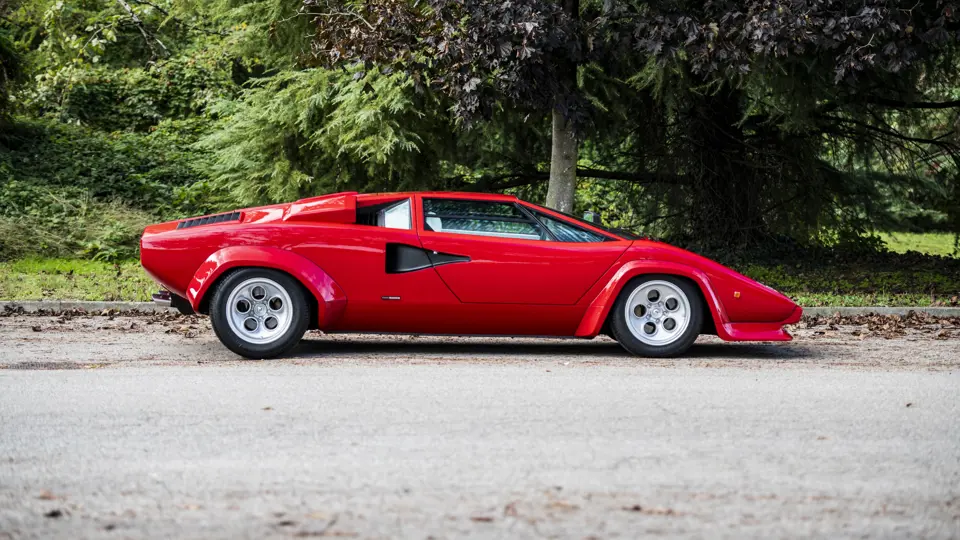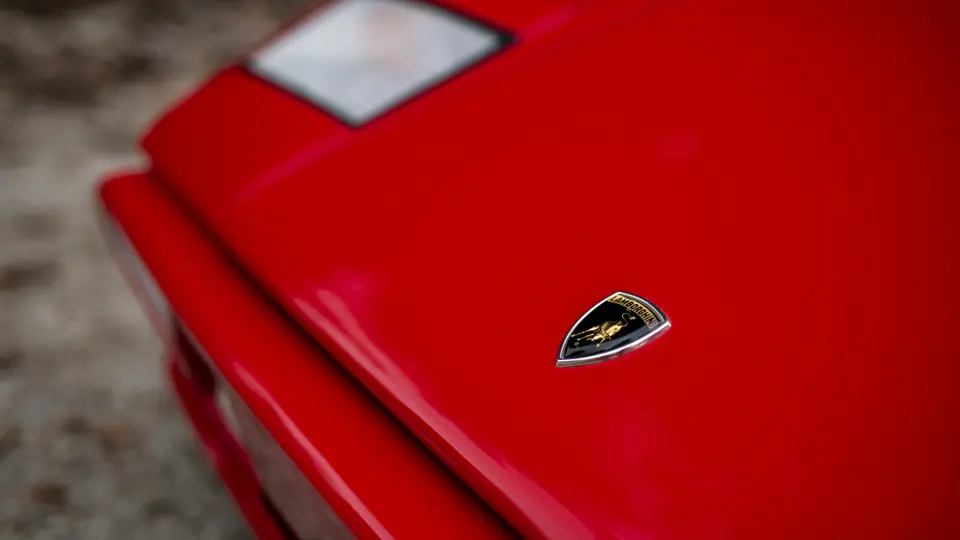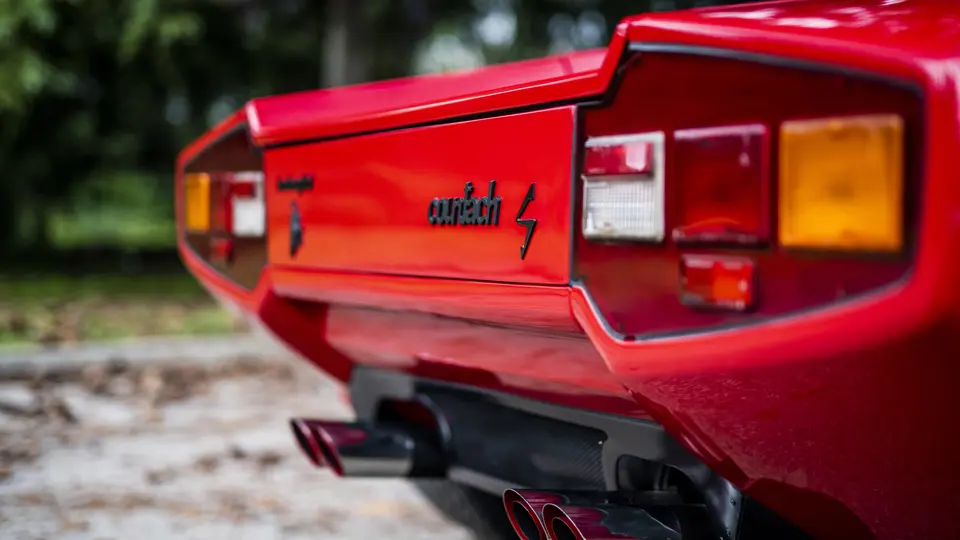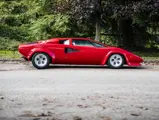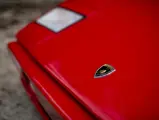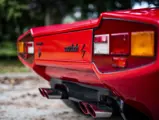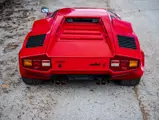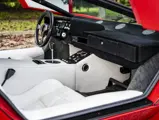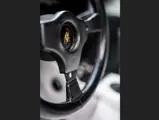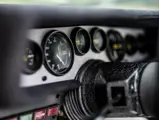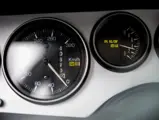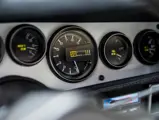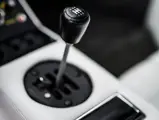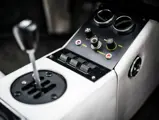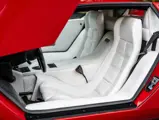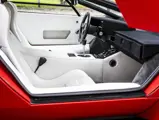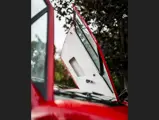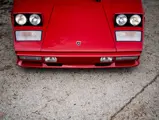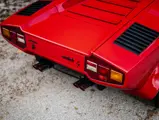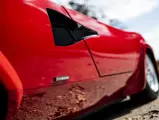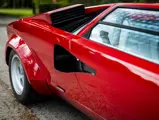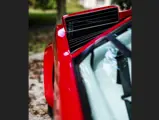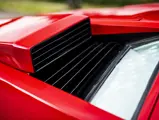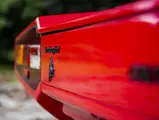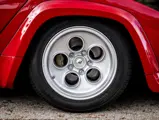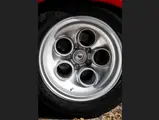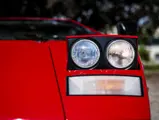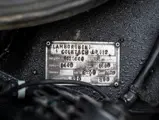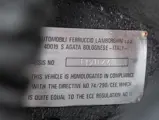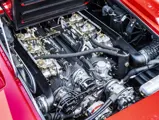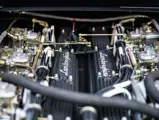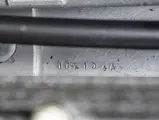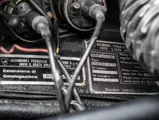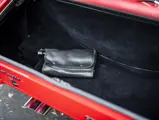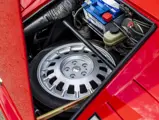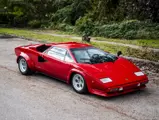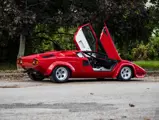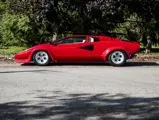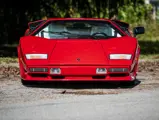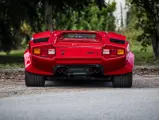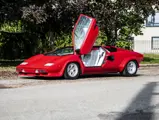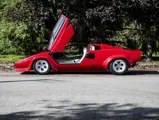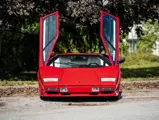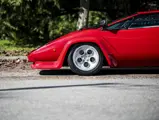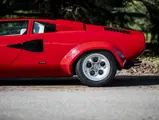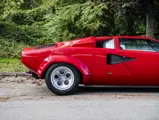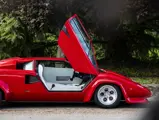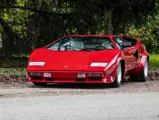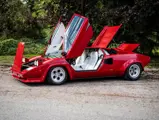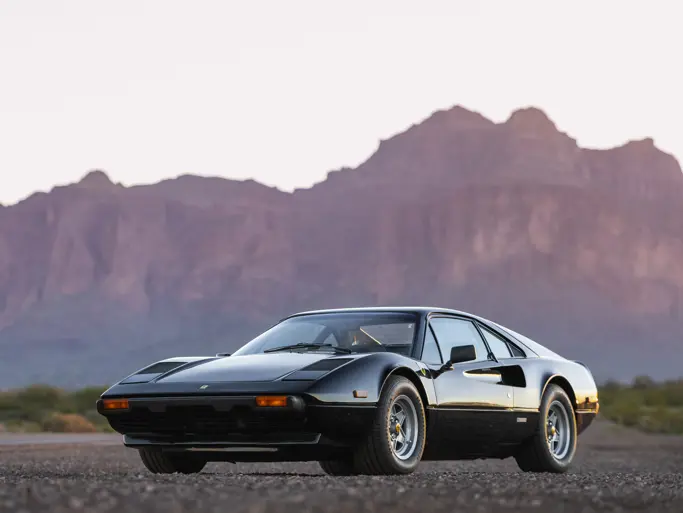
1979 Lamborghini Countach LP400 S by Bertone
{{lr.item.text}}
£400,000 - £500,000 GBP | Not Sold
{{bidding.lot.reserveStatusFormatted}}
- Early Series I LP400 S Countach, one of about 30 cars featuring the LP400-style dashboard
- Presented in its original colours of Rosso over Bianco
- Delivered new to Switzerland
Please note that this lot will need to be collected from Milan, Italy.
It would be fair to say that Lamborghini caused something akin to an automotive earthquake when it unveiled the production ready Countach LP400 in 1974. Its impossibly wide wedge shape, cab forward body re-wrote the rules of supercar aesthetics and began a dynasty of design at Lamborghini that would go on to produce the Diablo, Murciélago and Aventador. The man responsible for the feat was Marcello Gandini of Bertone, who had also masterminded the body its predecessor, the Miura. However, where the Miura had been curvaceous and perhaps relatively conservative in its appearance, the Countach was outrageous, designed without the constraints of ergonomics or trivial concerns about user friendliness; the finest example of which was perhaps its scissor doors, themselves borrowed from Gandini’s 1968 Alfa Romeo Carabo concept car.
‘LP’ or longitudinale posterior was a nod to another design first: unlike the Miura which had been dynamically compromised by the arrangement of its tranverse V-12 engine sitting above its gearbox, the Countach’s powertrain was arranged longitudinally and much lower in the chassis. This not only enabled a far more effective cooling setup to be utilized to address to the Miura’s propensity to overheat, but also significantly improved the car’s center of gravity. It was made possible because the V-12 was designed with a front output shaft, meaning the transmission could be located just aft-and-between the driver and passenger, which massively reduced gear linkage complexity, improved the gearshift action and improved weight distribution. Power was then returned via a propshaft that ran through the engine sump to the rear differential and onto the rear wheels.
This car is a 1979 Series One LP400 ‘S’, which was the first series to follow the original 158 examples of the LP400 that had been built between 1974 and 1977. Only fifty of these Series One LP400 S Countaches would be built. The most discernable difference for the ‘S’ was a lower suspension setup and significant changes to the bodywork, which featured prominent fiberglass wheel arch extensions to house the 205 section (front) and 345 section (rear) tyres, wrapped around the beautiful Campagnolo Bravo magnesium wheels. Being an early Series One example, it also features the sought-after Stewart Warner ‘small gauge’ dashboard, like in the LP400 “Periscopio”. Power is rated at 350 bhp and comes from a 3,929 cc variant of the Giotto Bizzarrini V-12, breathing through six twin-choke 45 mm side draft Weber carburetors, giving the car a top speed of 160 mph and a 0-60mph benchmark of 5.8 seconds.
It presents in excellent condition having been the subject of a recent comprehensive restoration, during which the bodywork was taken back to bare metal and any areas needing attention were duly rectified, before the car was repainted in factory correct shade of Rosso. The drivetrain and carburetors were also removed, stripped down and rebuilt with new components where required; the engine bay is a sight to behold and is testament to the quality of the restoration, even down to the quality of the black crackle paintwork on the intake manifold and the omnipresent zinc plated fastenings. Photographic documentation of the work is present in the accompanying history file, alongside period photos and its certificate of authenticity from Lamborghini, which was issued in January 2016.
Prior to the restoration, the history file contains a previous French Certificate d’immatriculation, showing that the car was owned in France by Thomas Chrsitian of Mertzwiller, France from 2000 to 2015. Prior to that, the car enjoyed two previous owners in France, a Mr. Antoine Spinella and a Mr. Stork. Photos of the car in the history file also show that it was previously registered in Germany and Sweden, but details of its history in those countries is unknown.
A fantastic example of a sought-after variant of the grandfather of the modern supercar, in a specification that manages to perfectly tread the fine line between menace and elegance.
Should you want more information on the condition of this lot and or discuss the possibility of an in-situ inspection, please contact our office at +44 (0) 20 7851 7070 or email Britta Buchmann at bbuchmann@rmsothebys.com

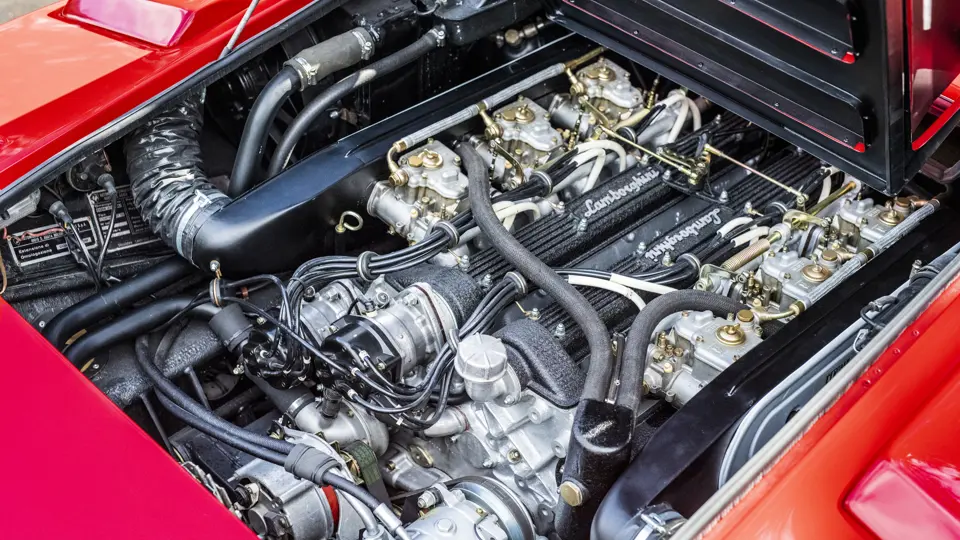
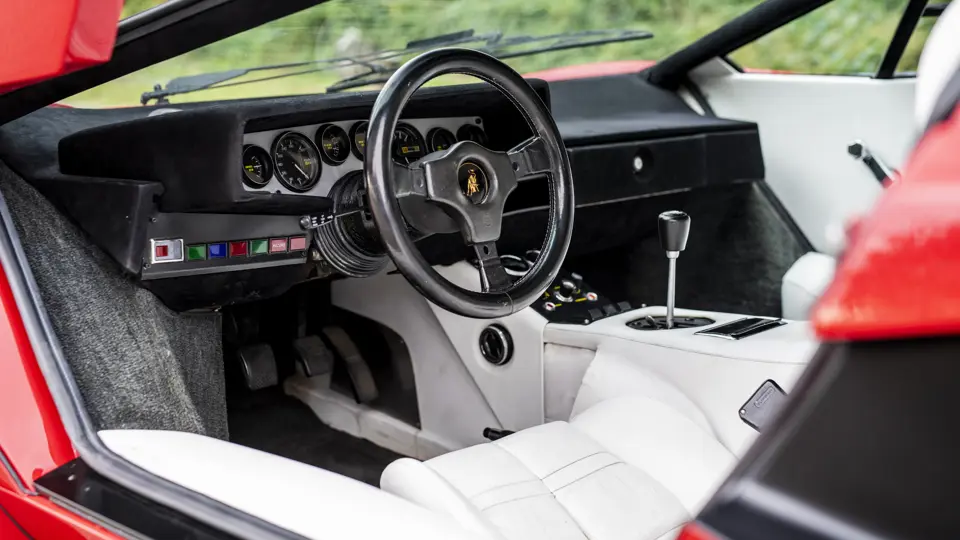

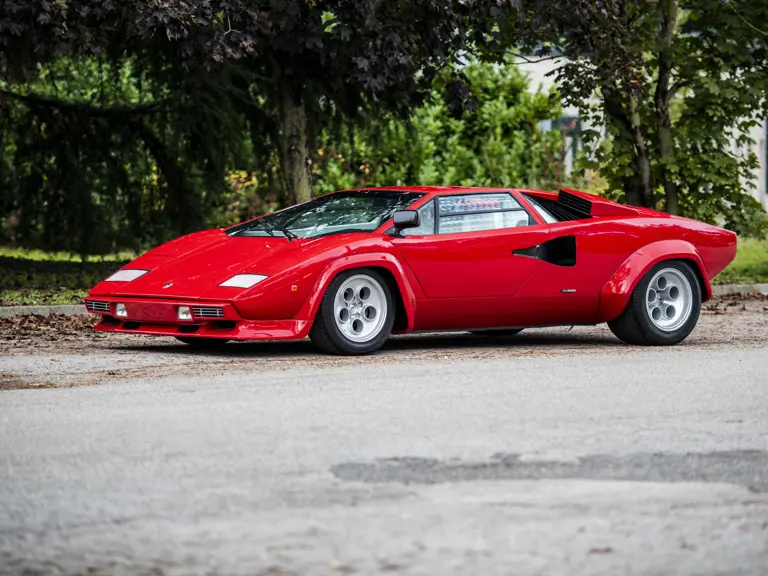
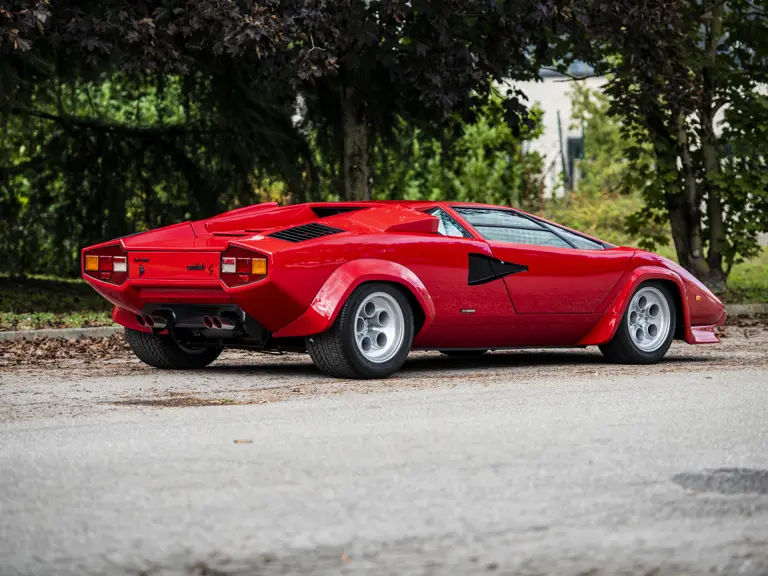
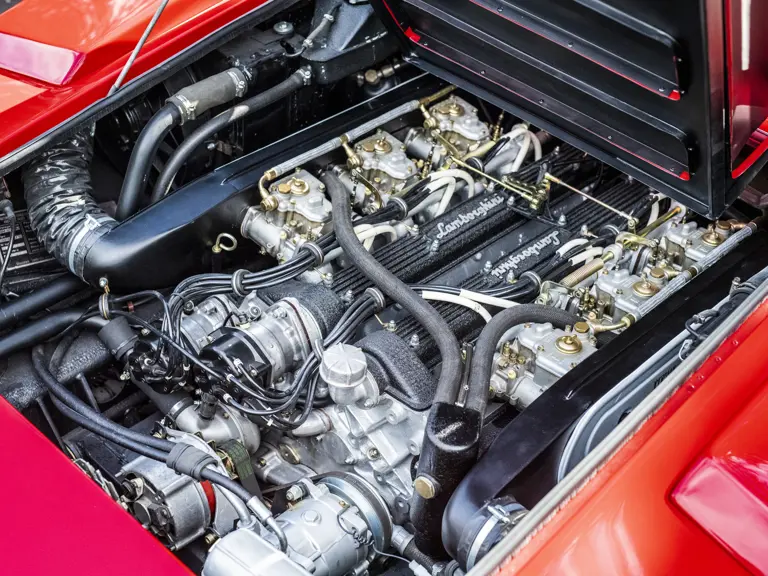
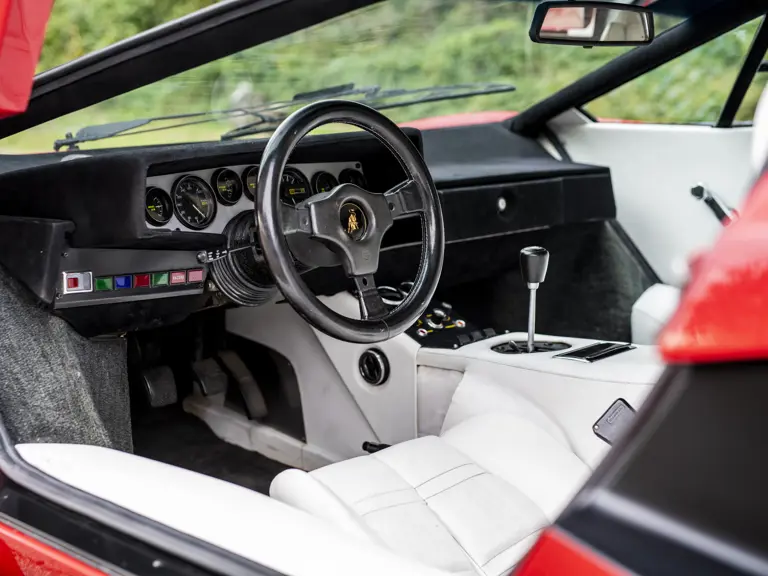
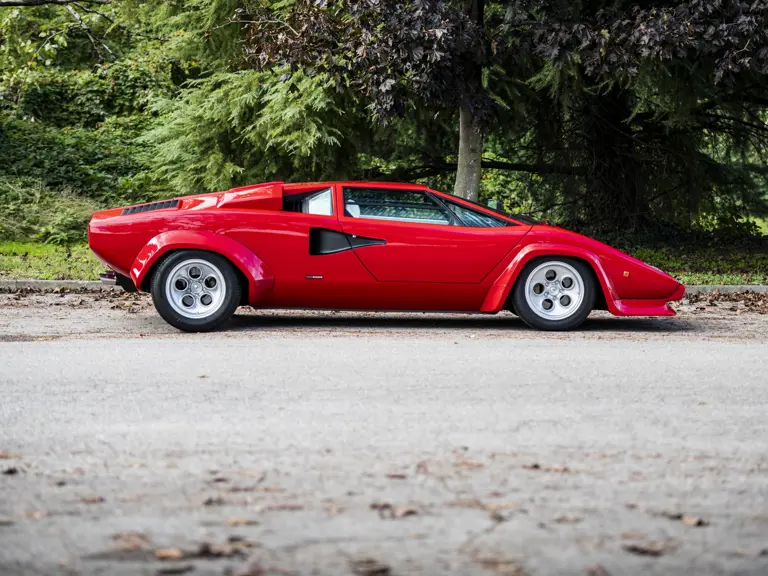

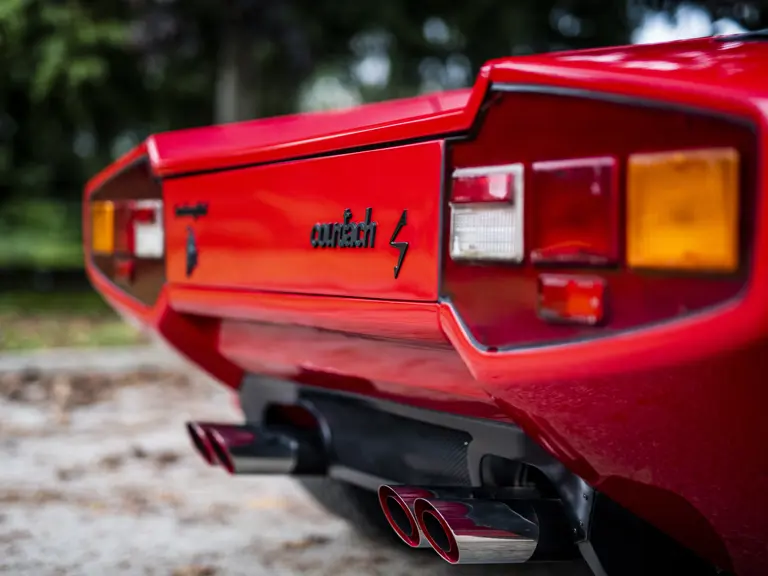
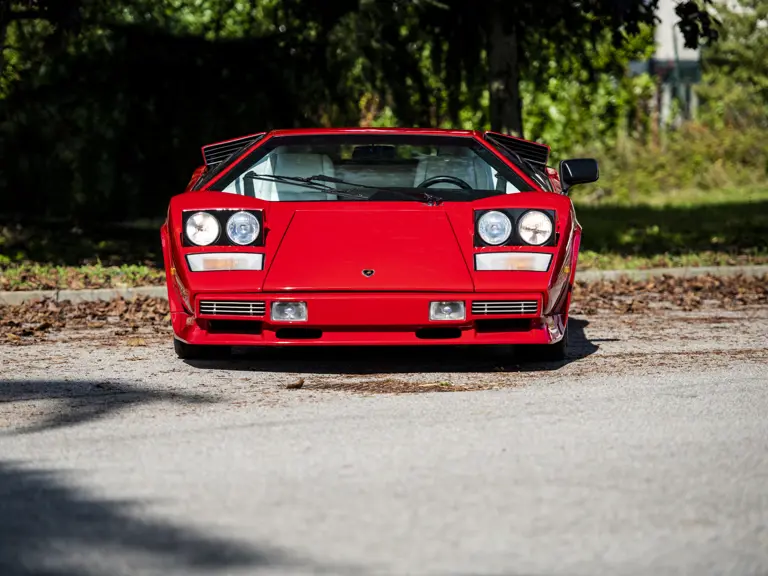
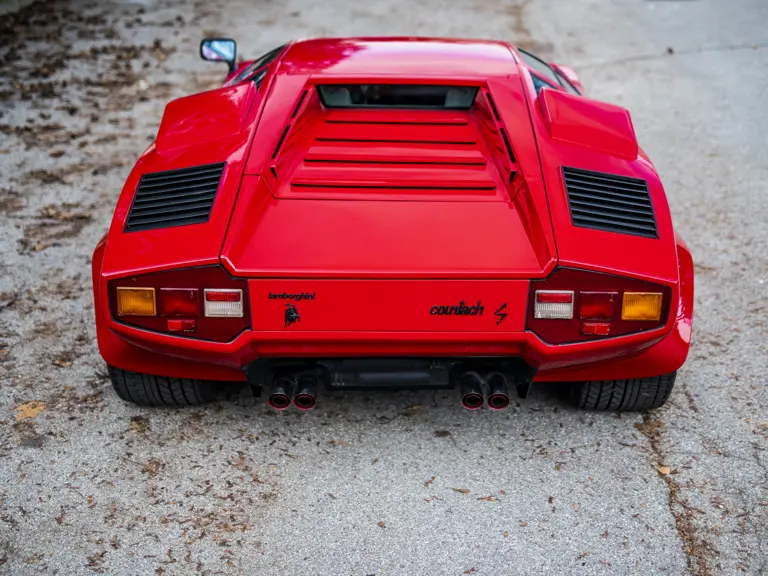

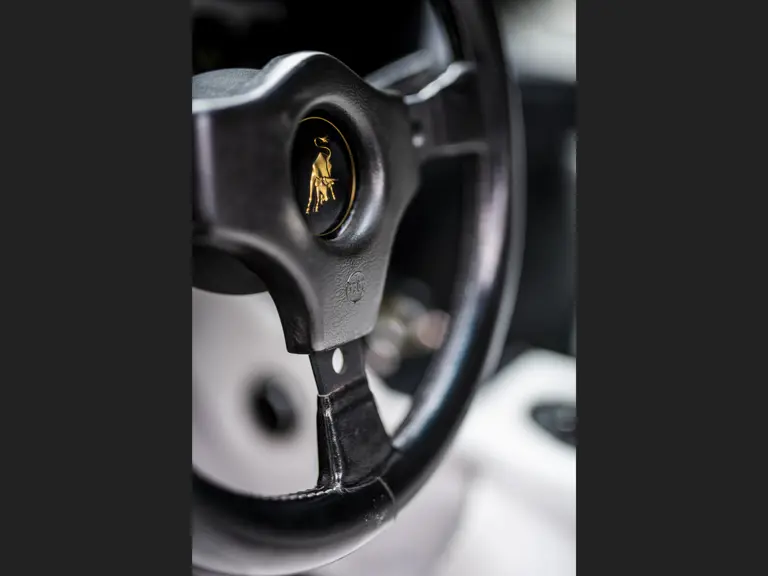

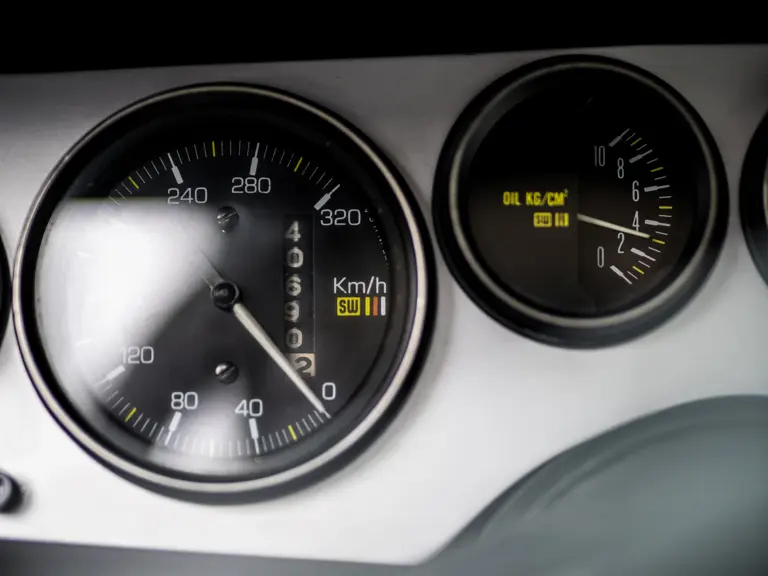
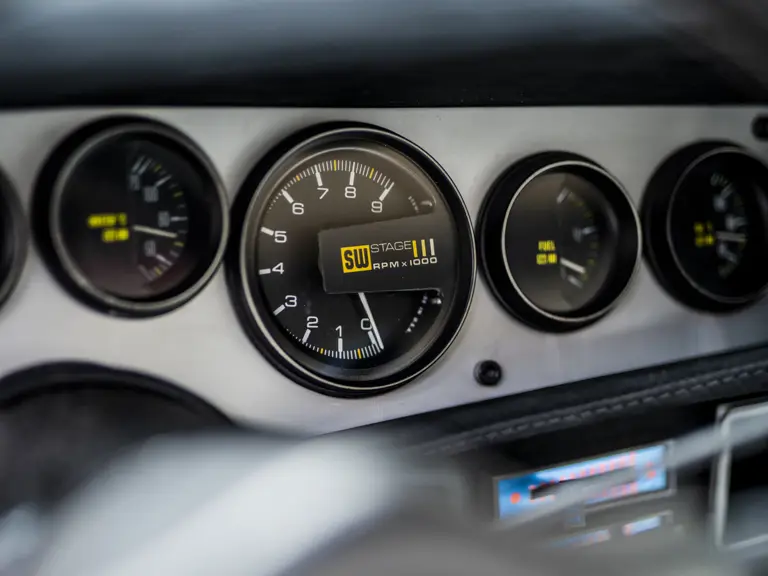
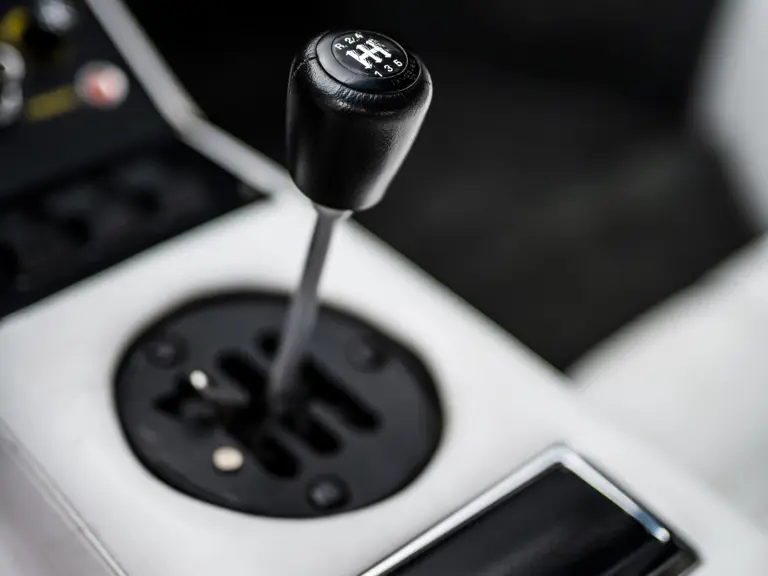
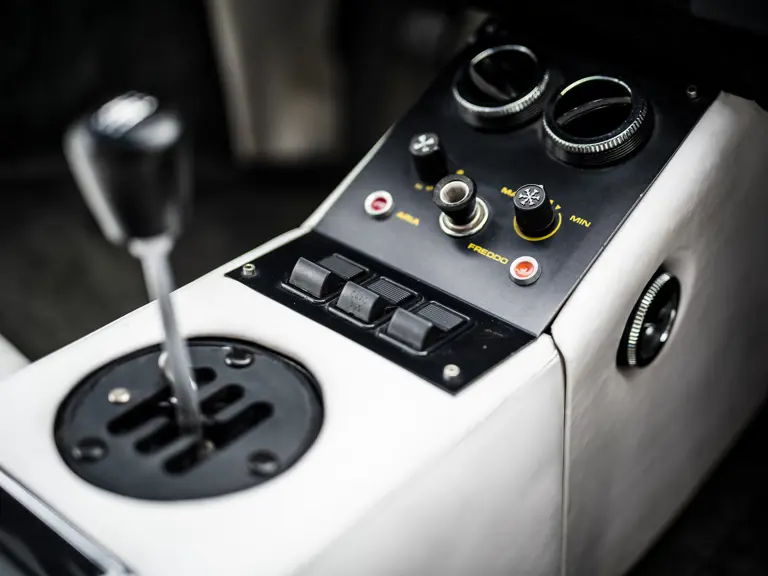
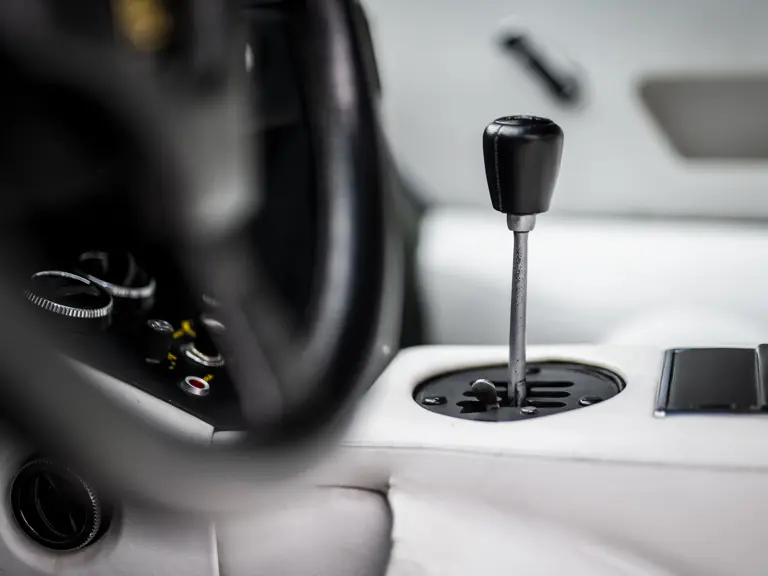
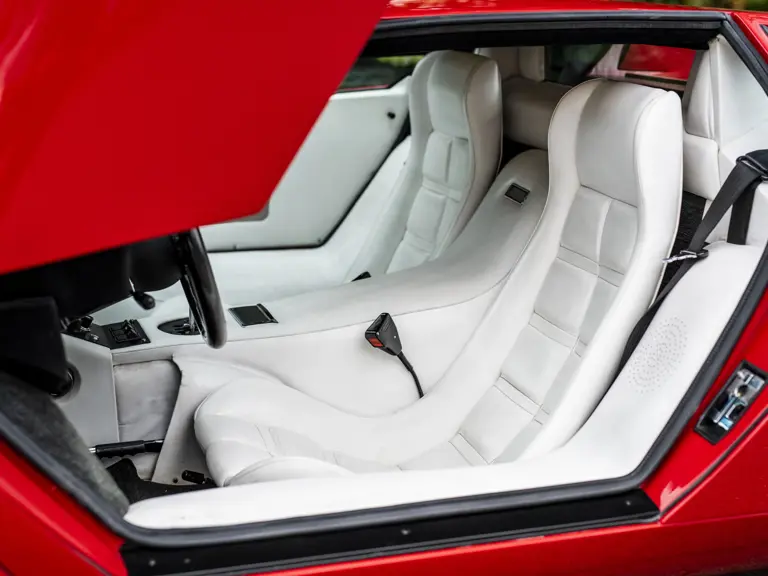

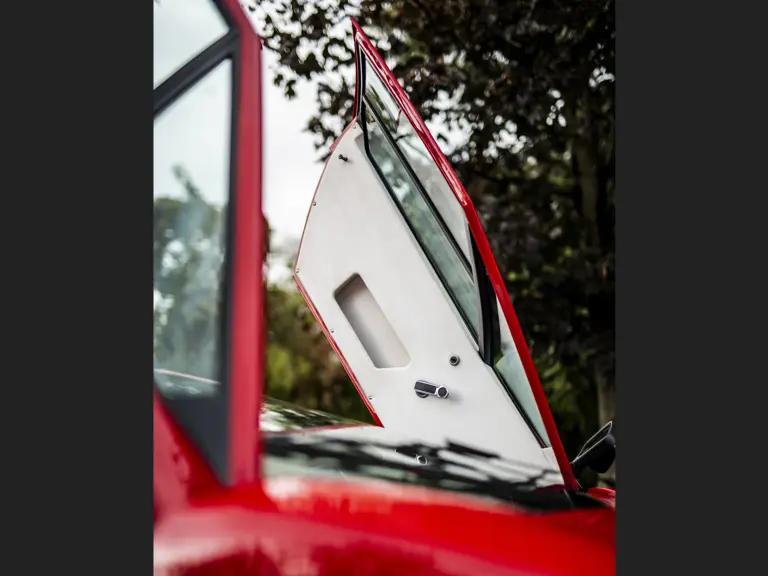
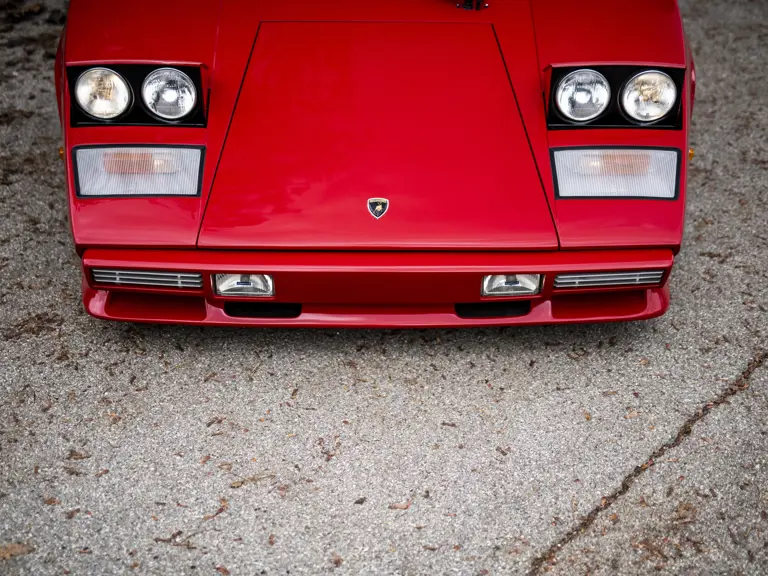
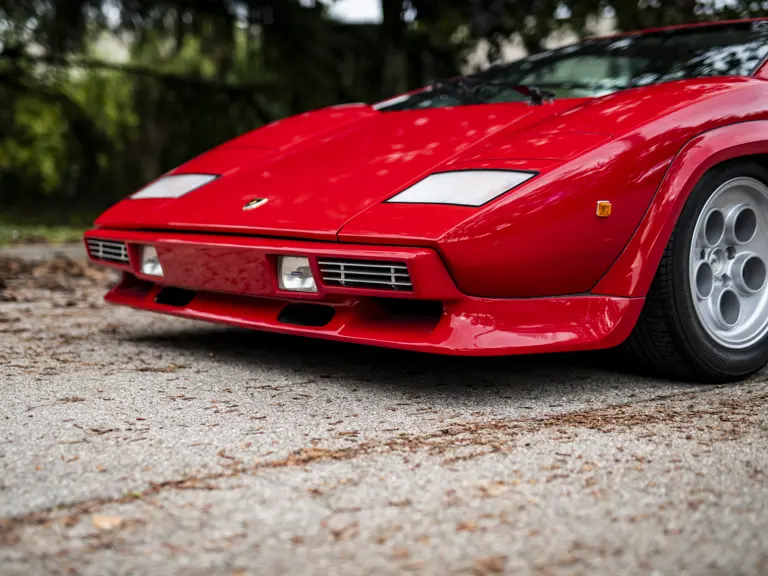
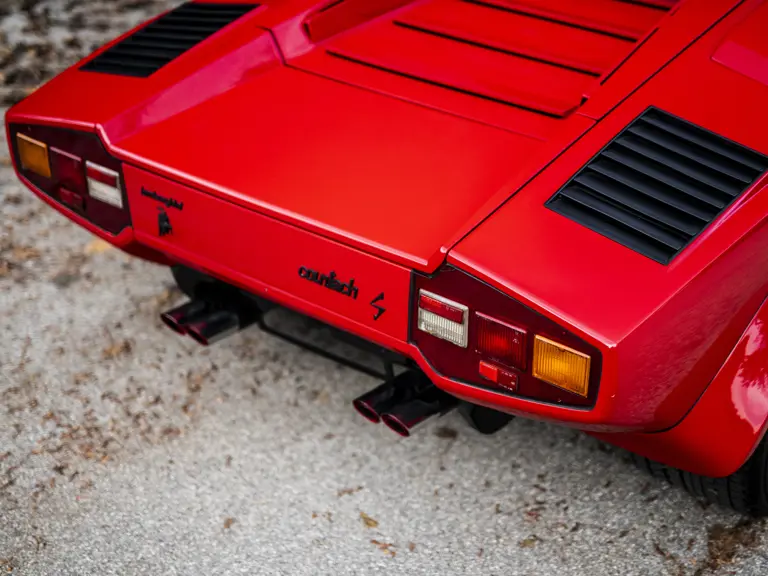
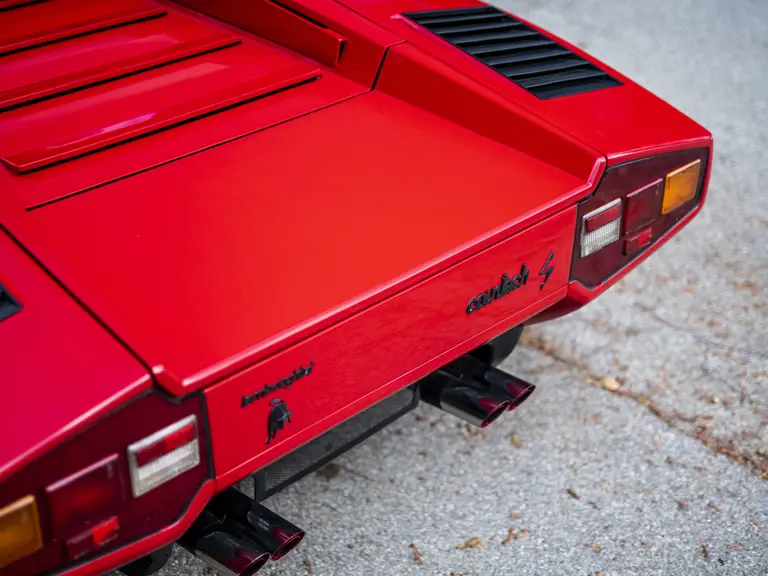
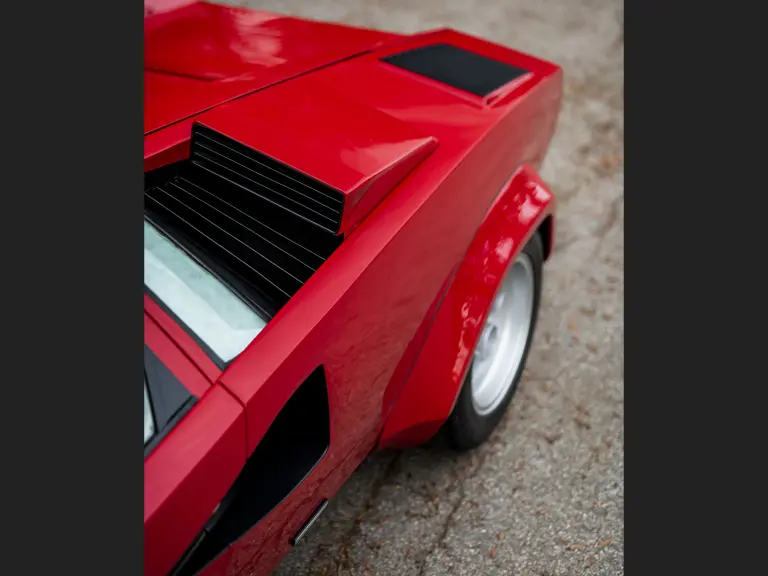
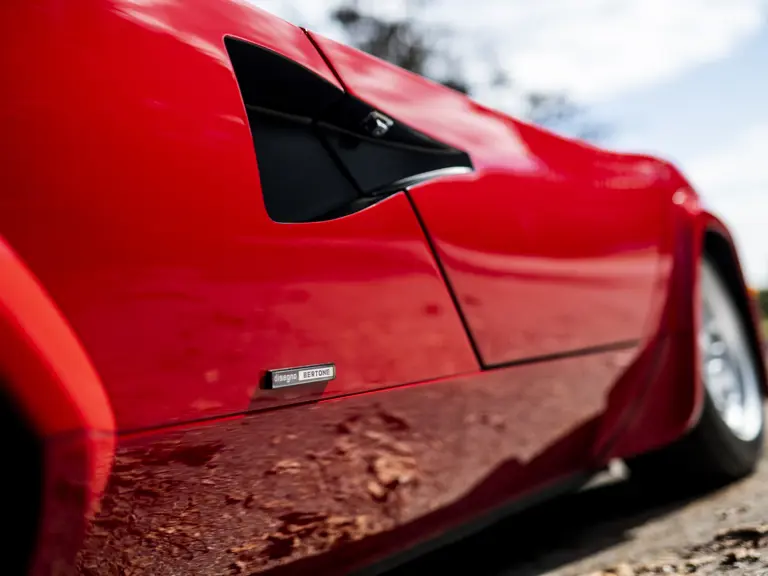
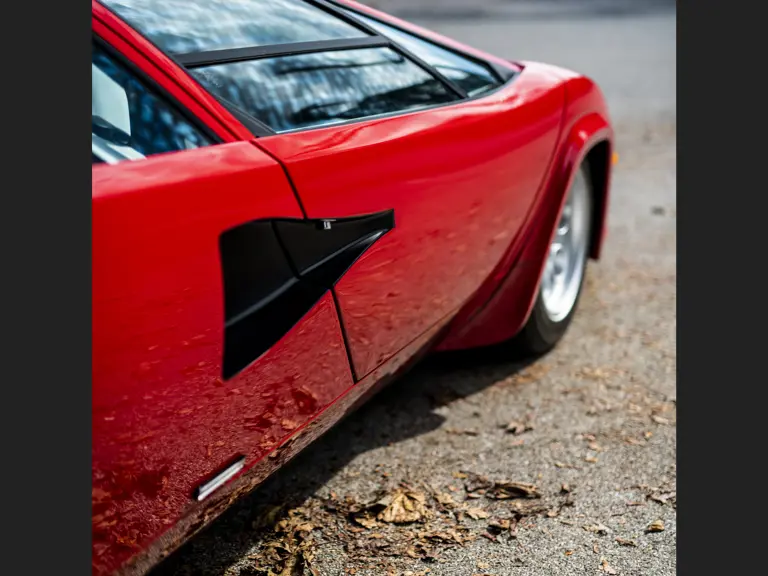
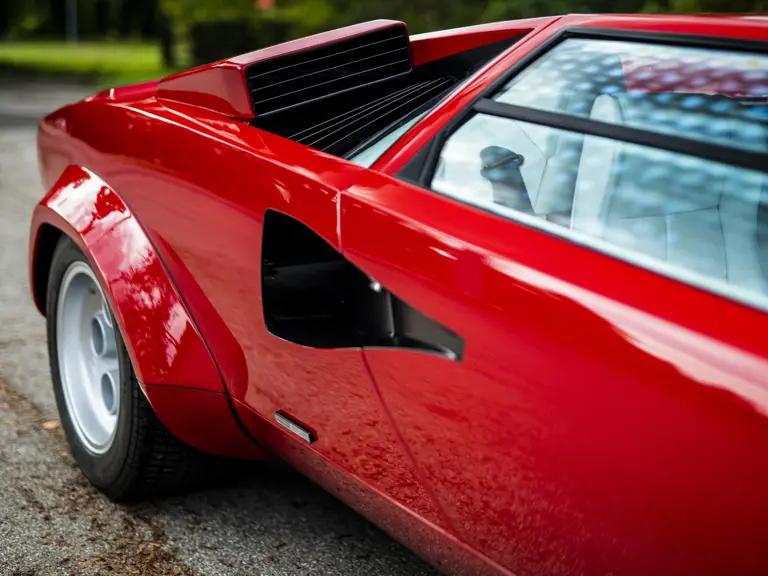

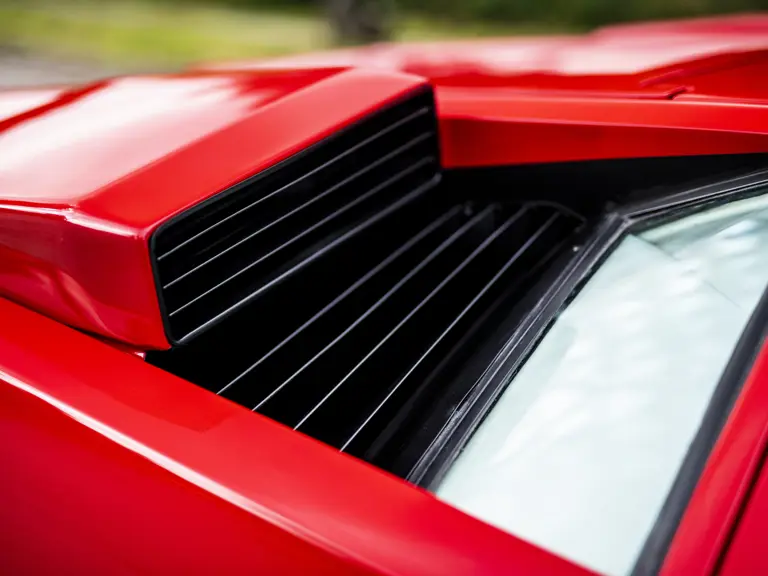
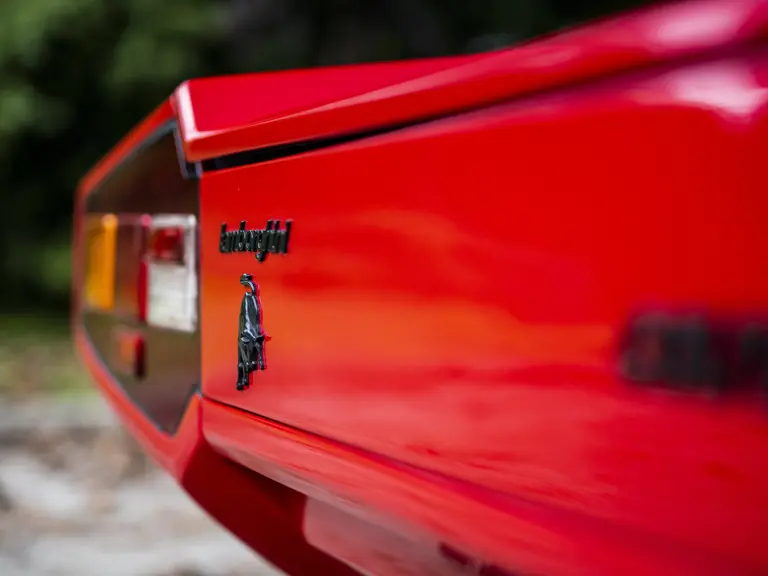
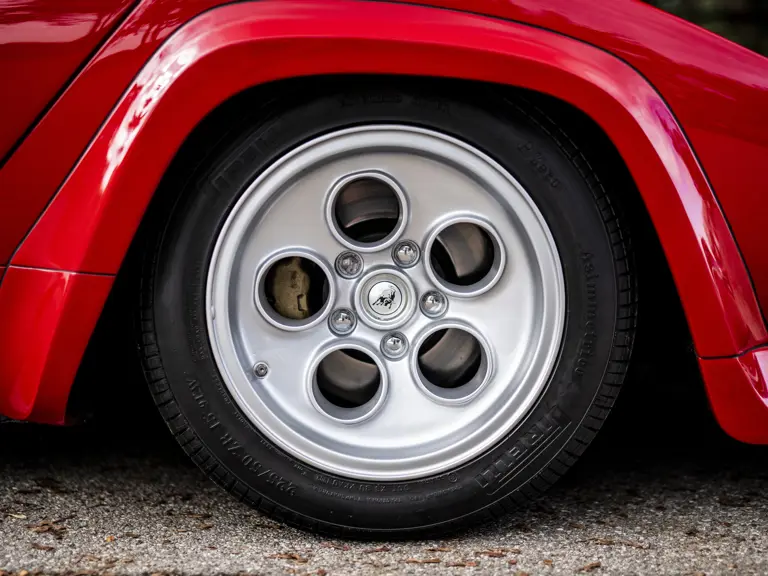
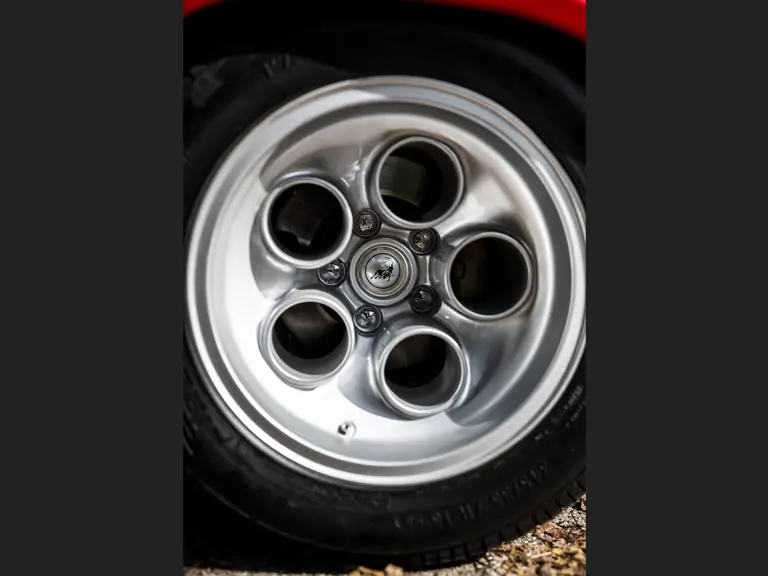
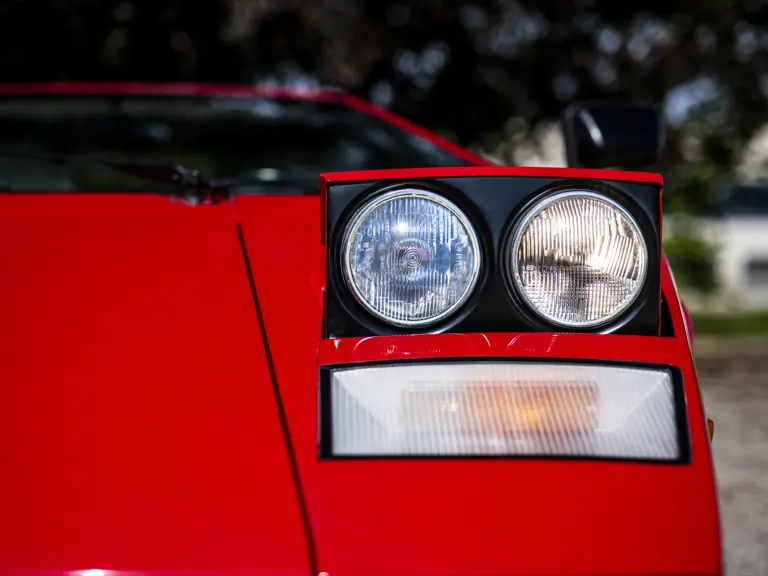

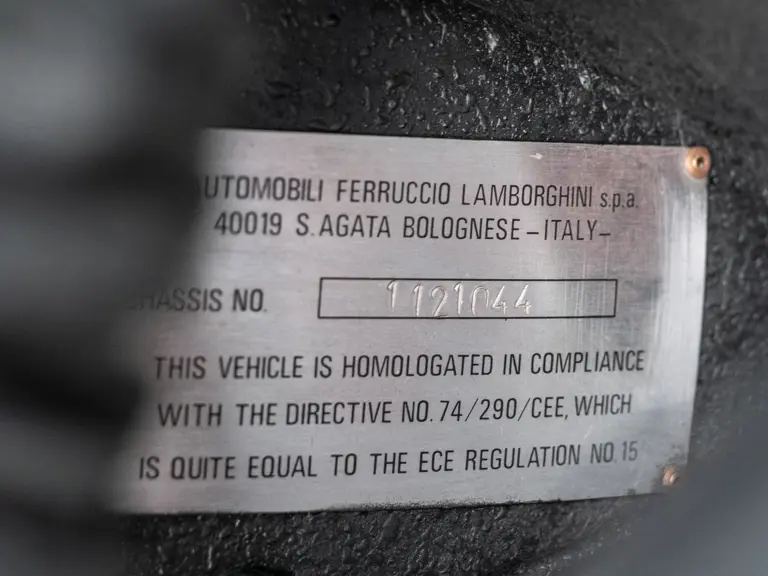
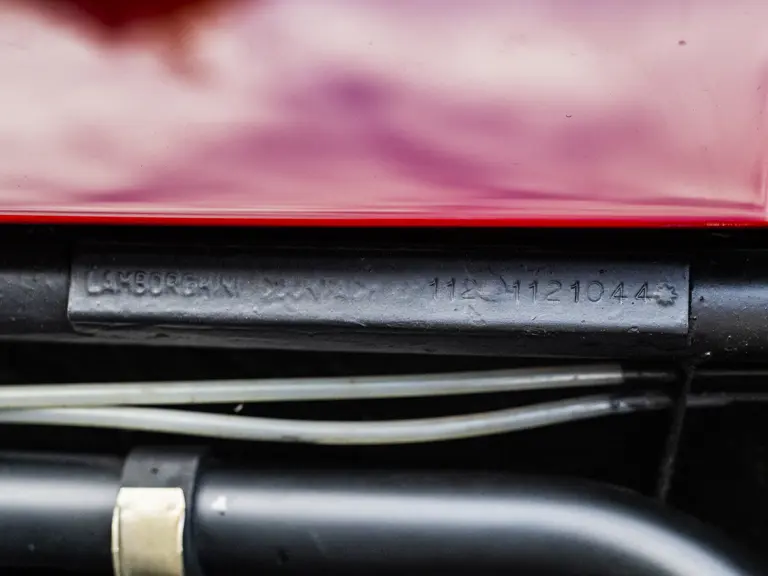
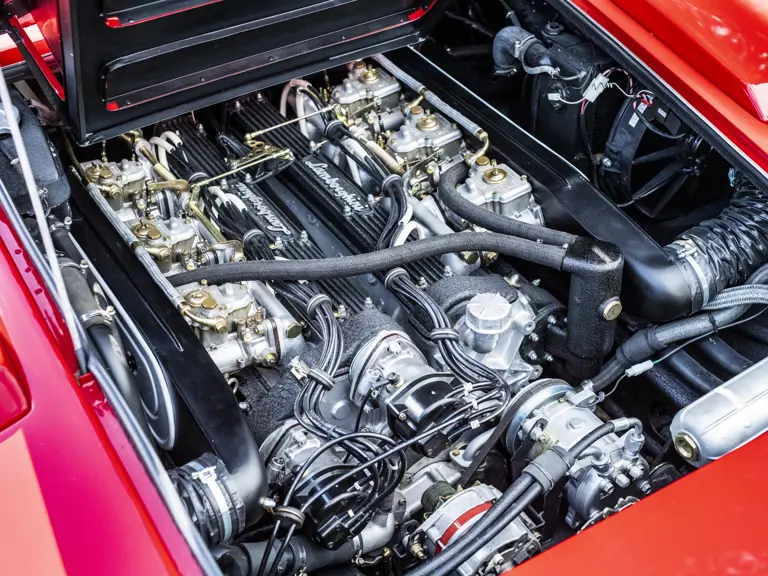
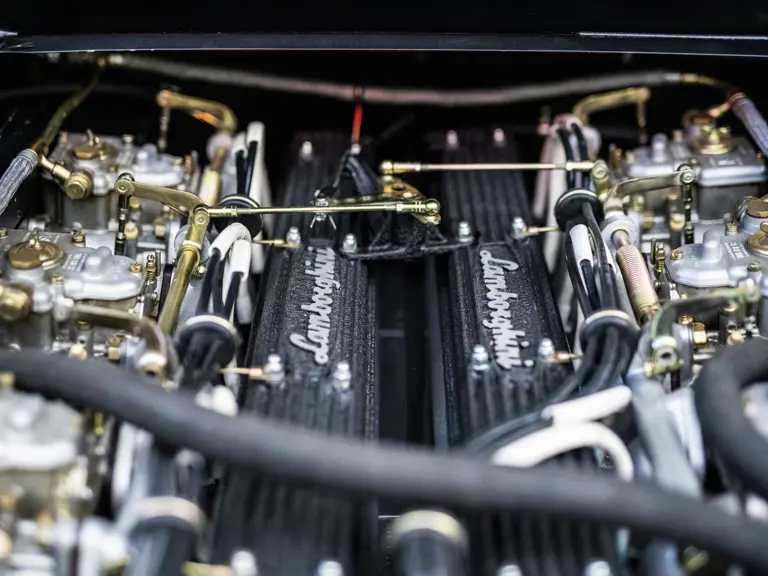

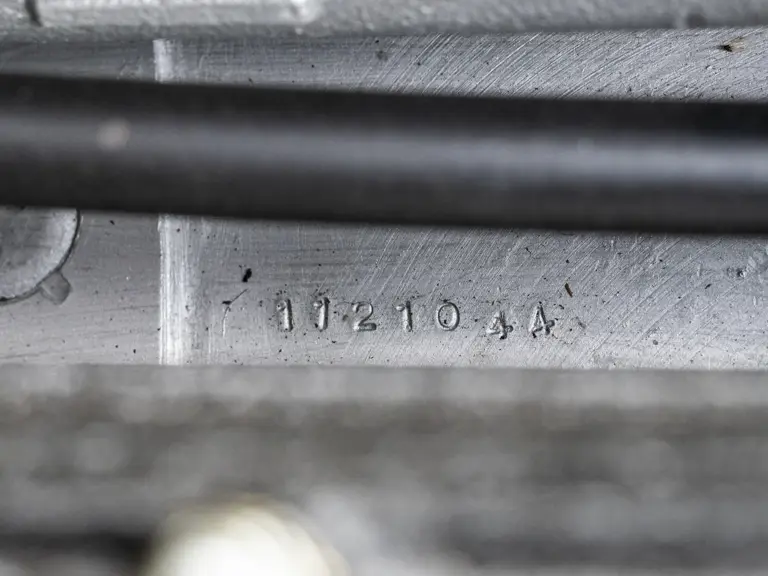
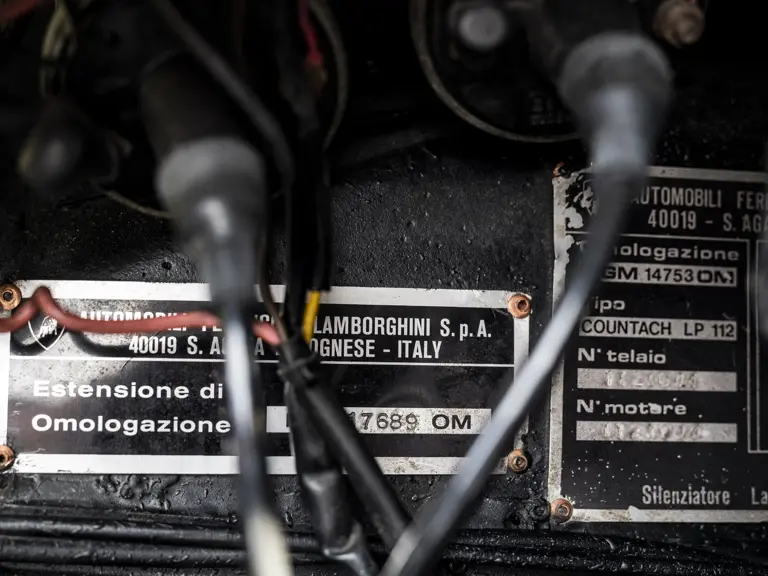
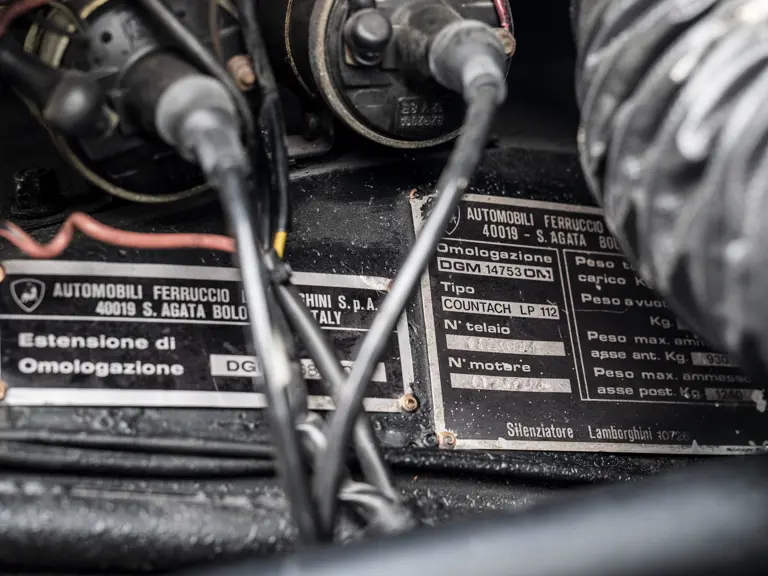
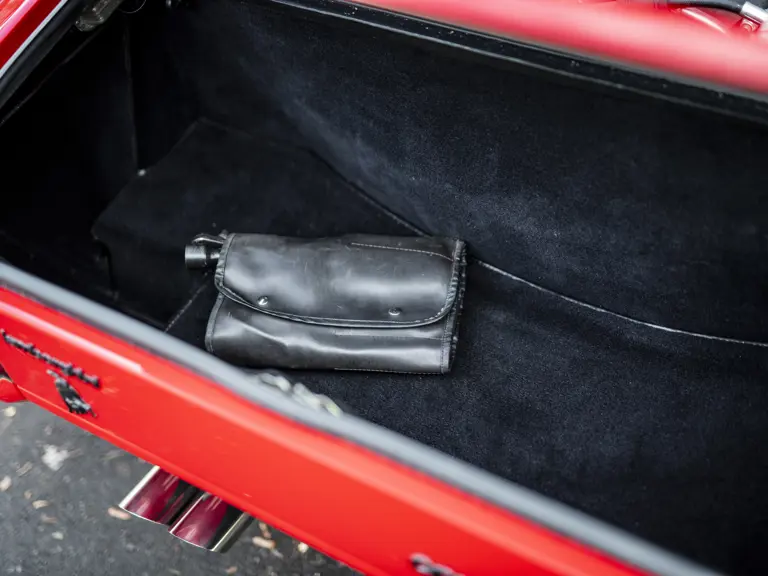
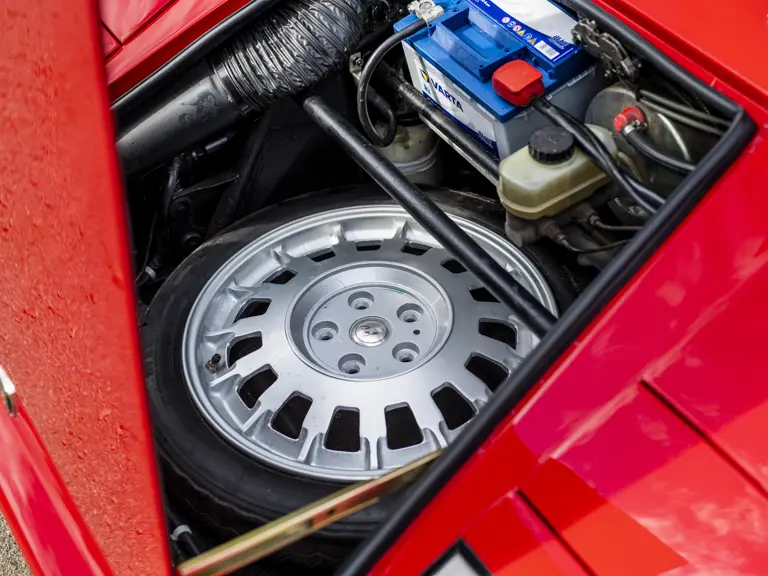
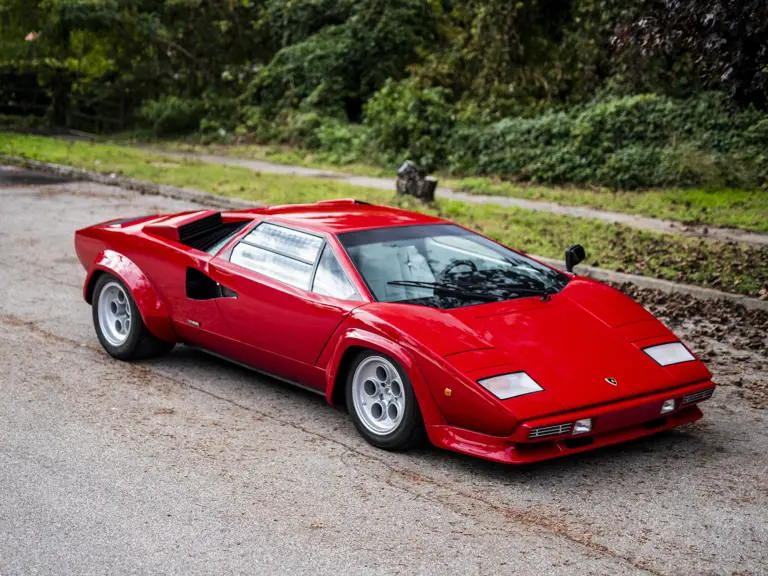
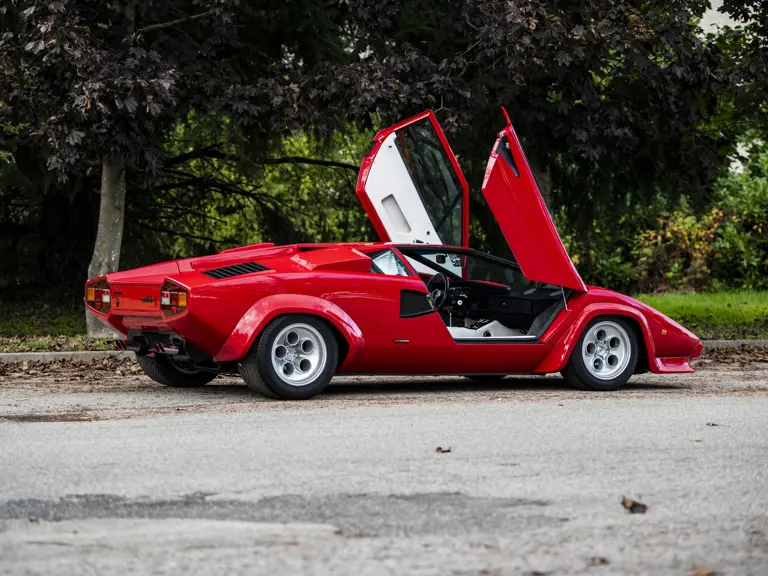
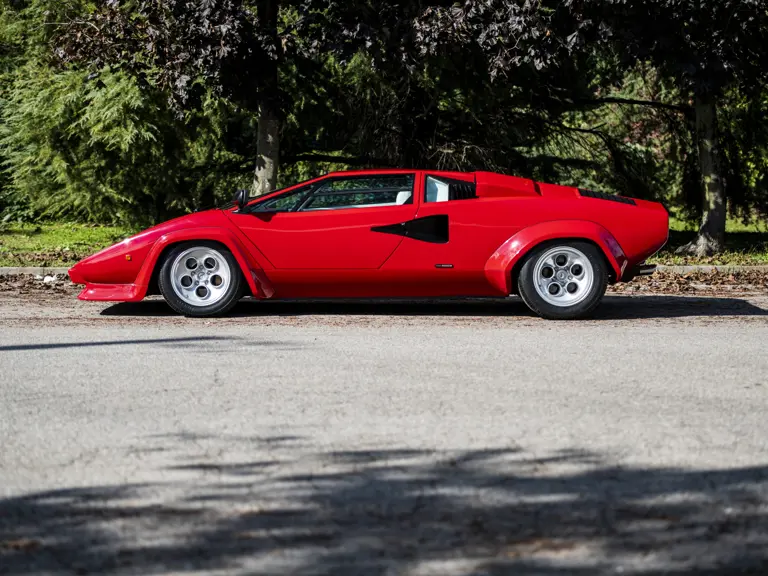
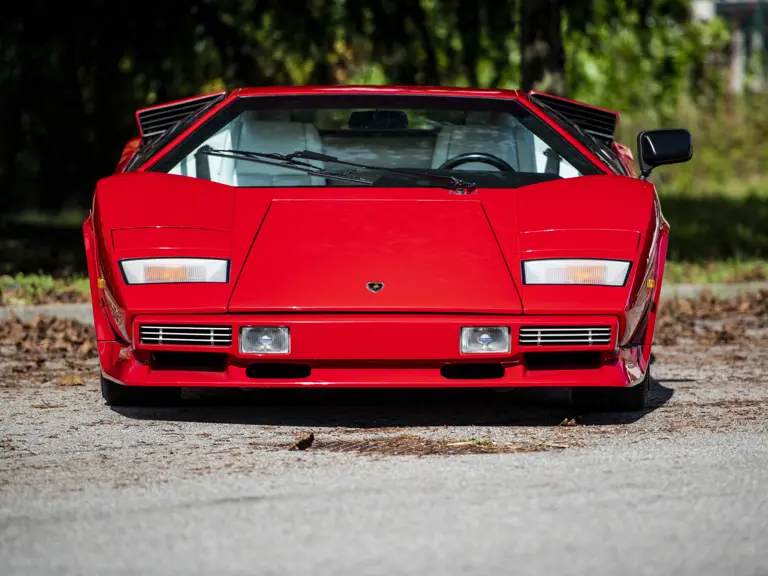
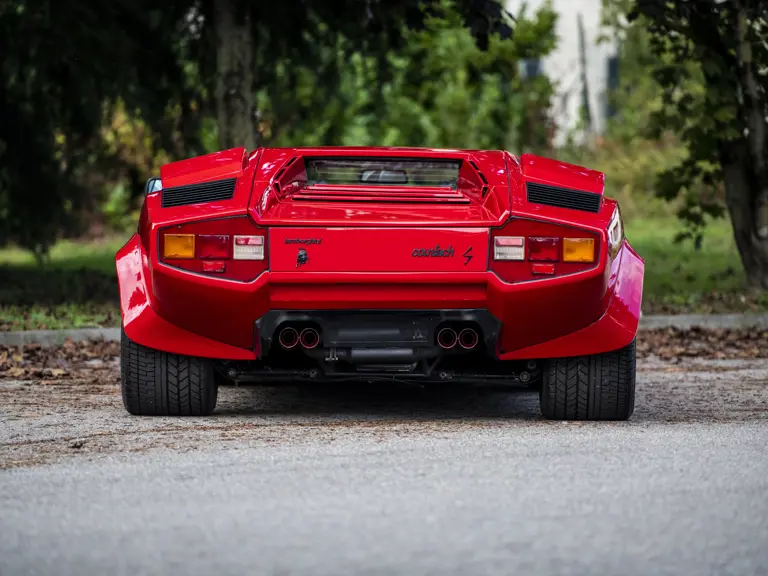
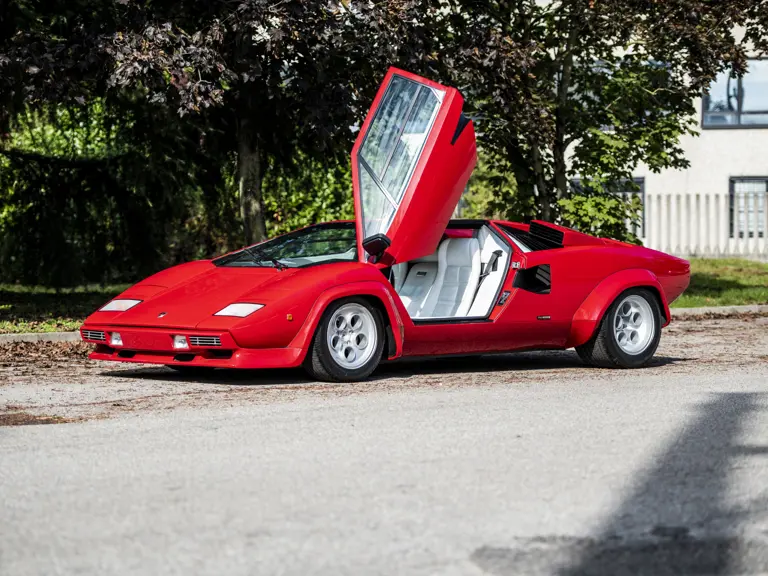
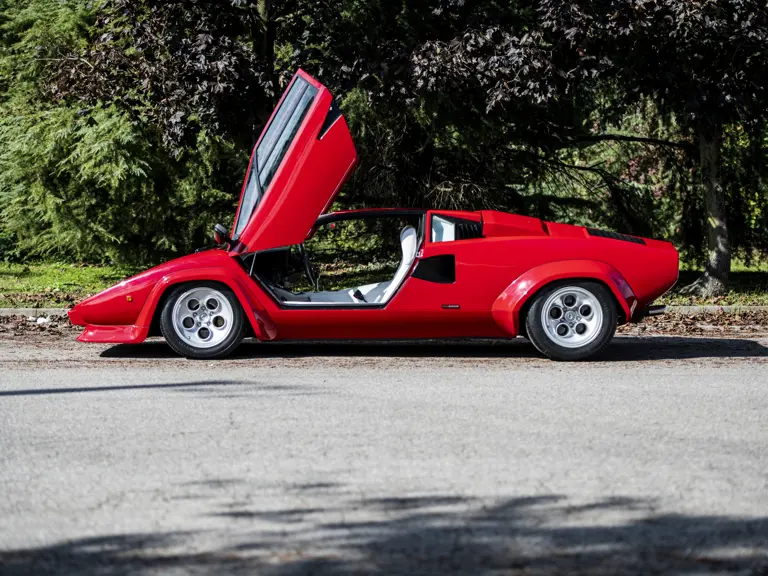
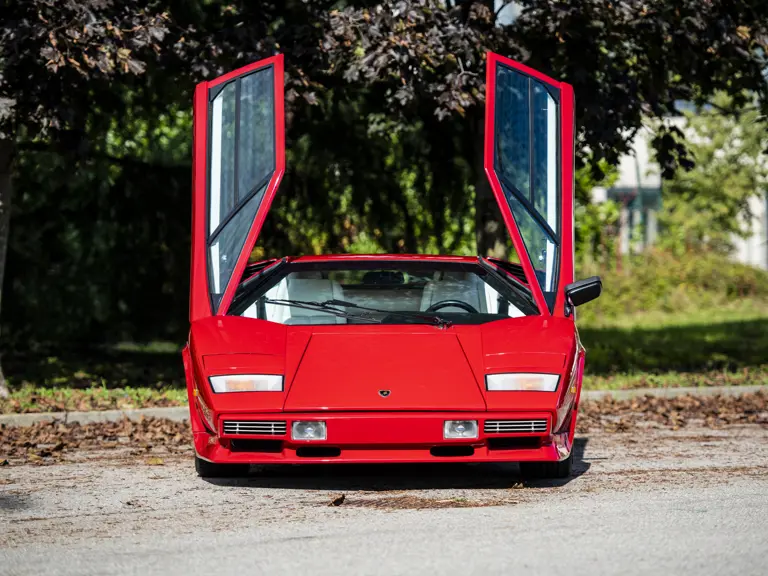
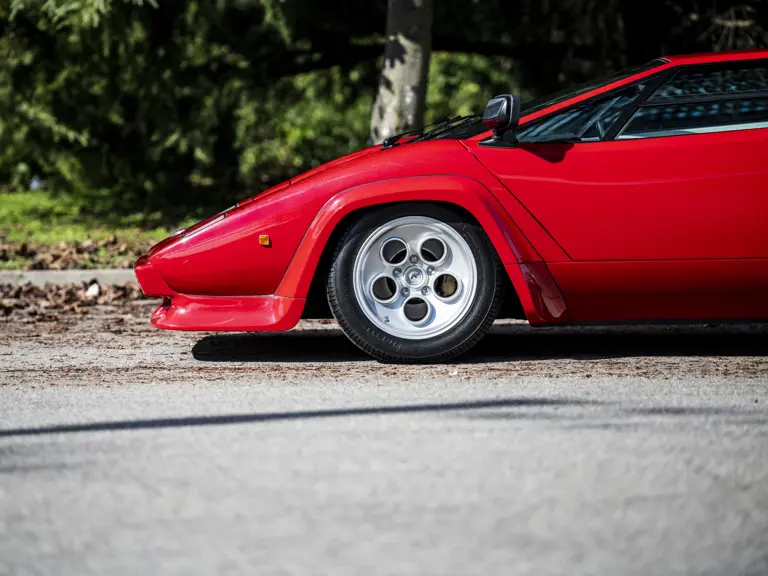
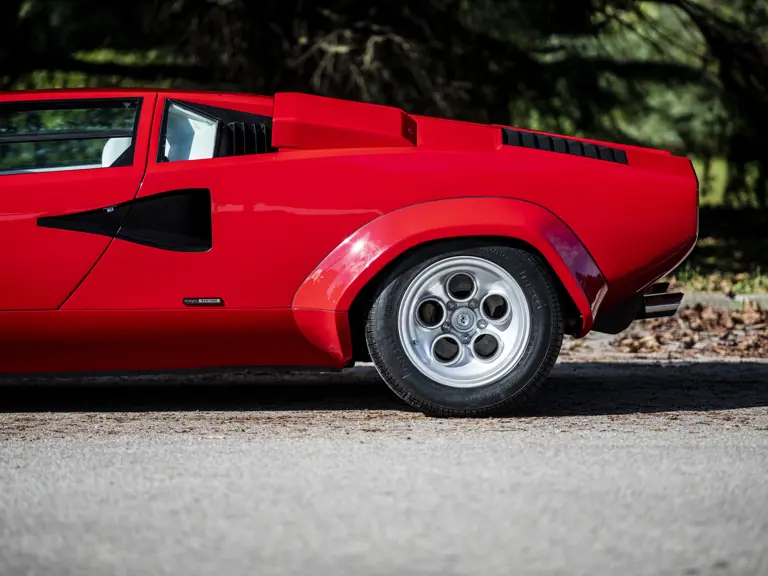
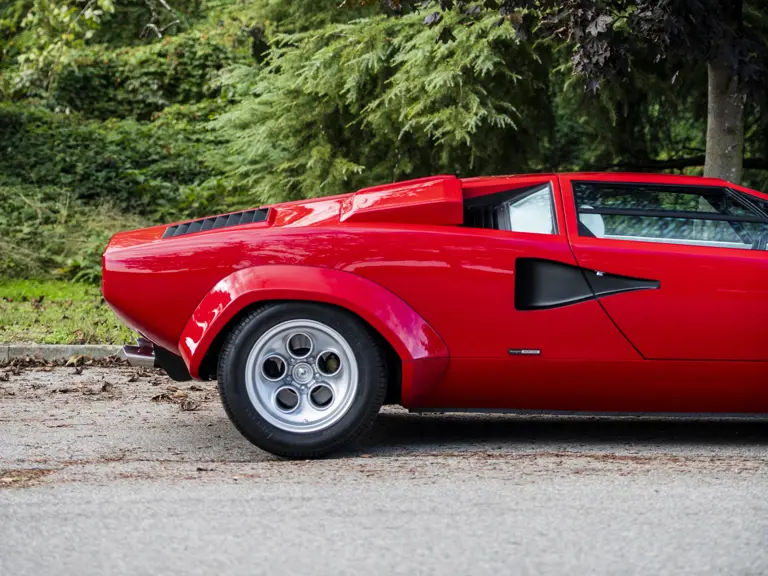
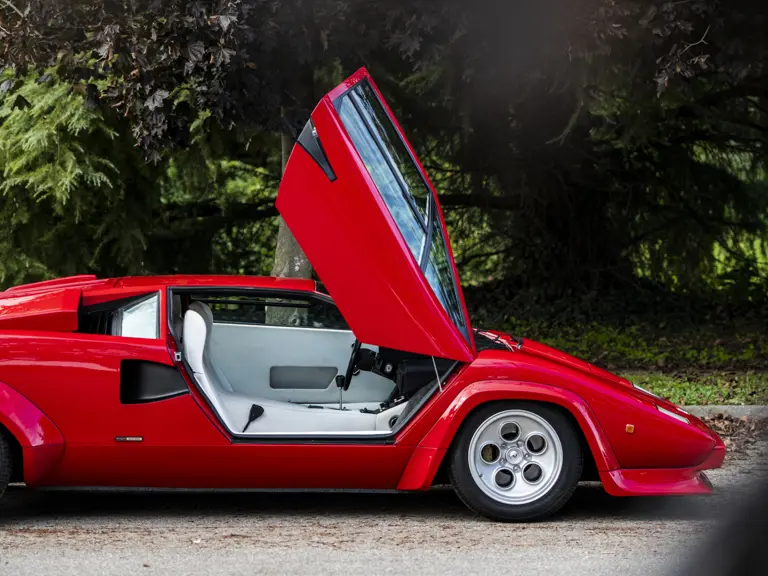

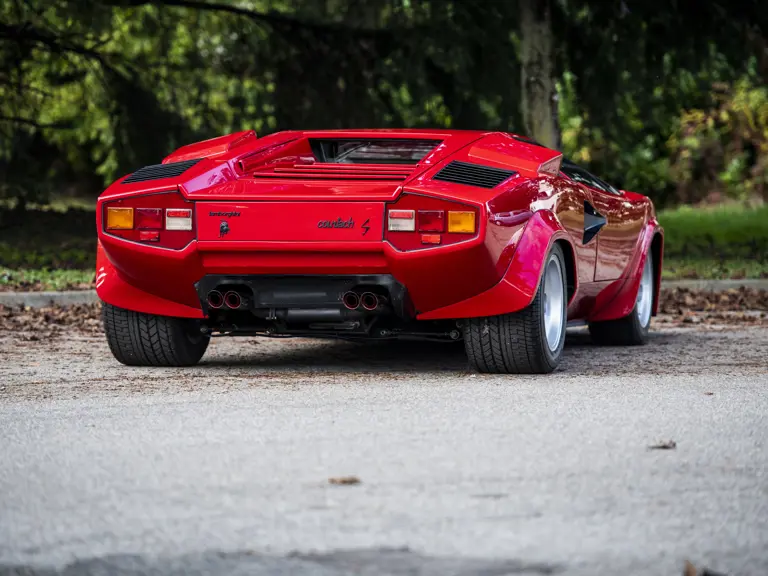
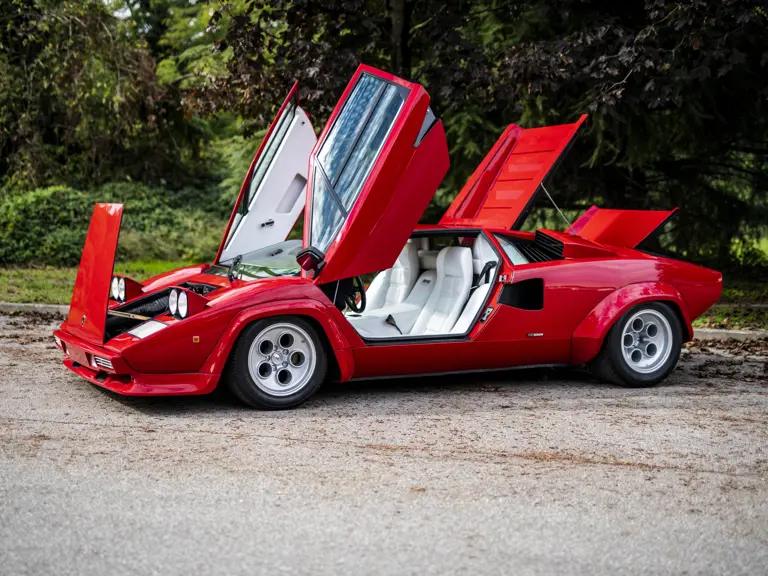
 | Milano, Italy
| Milano, Italy
